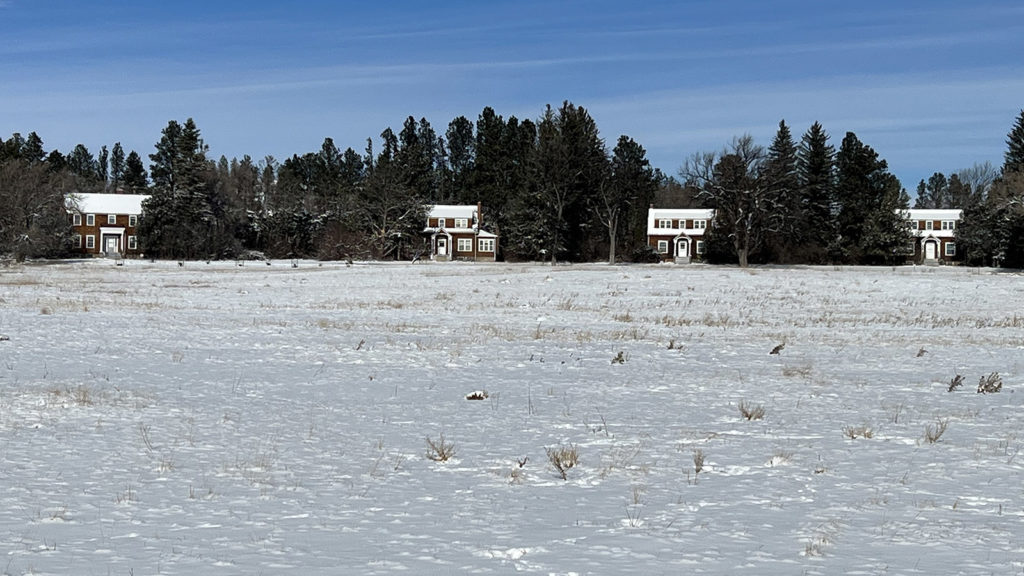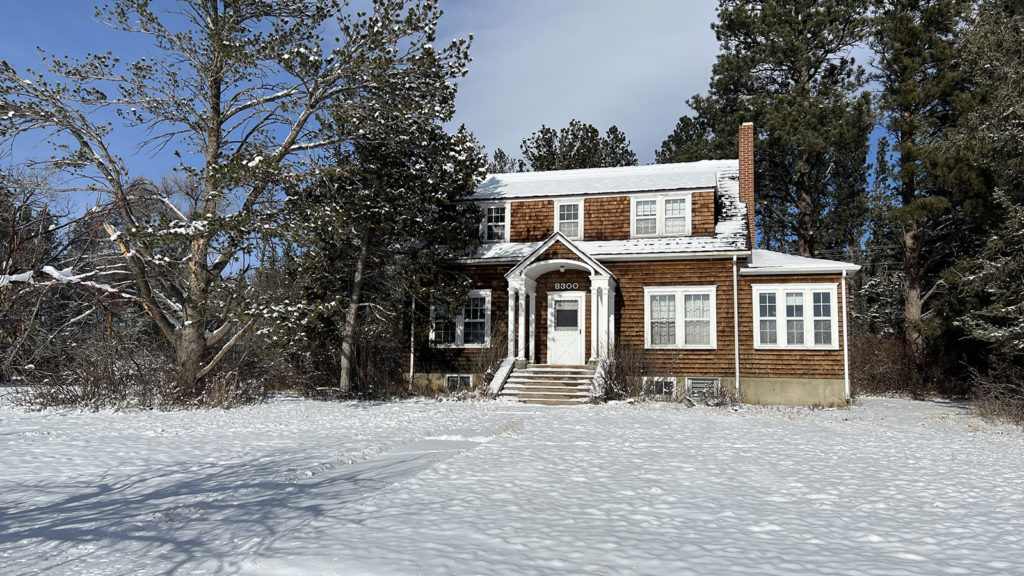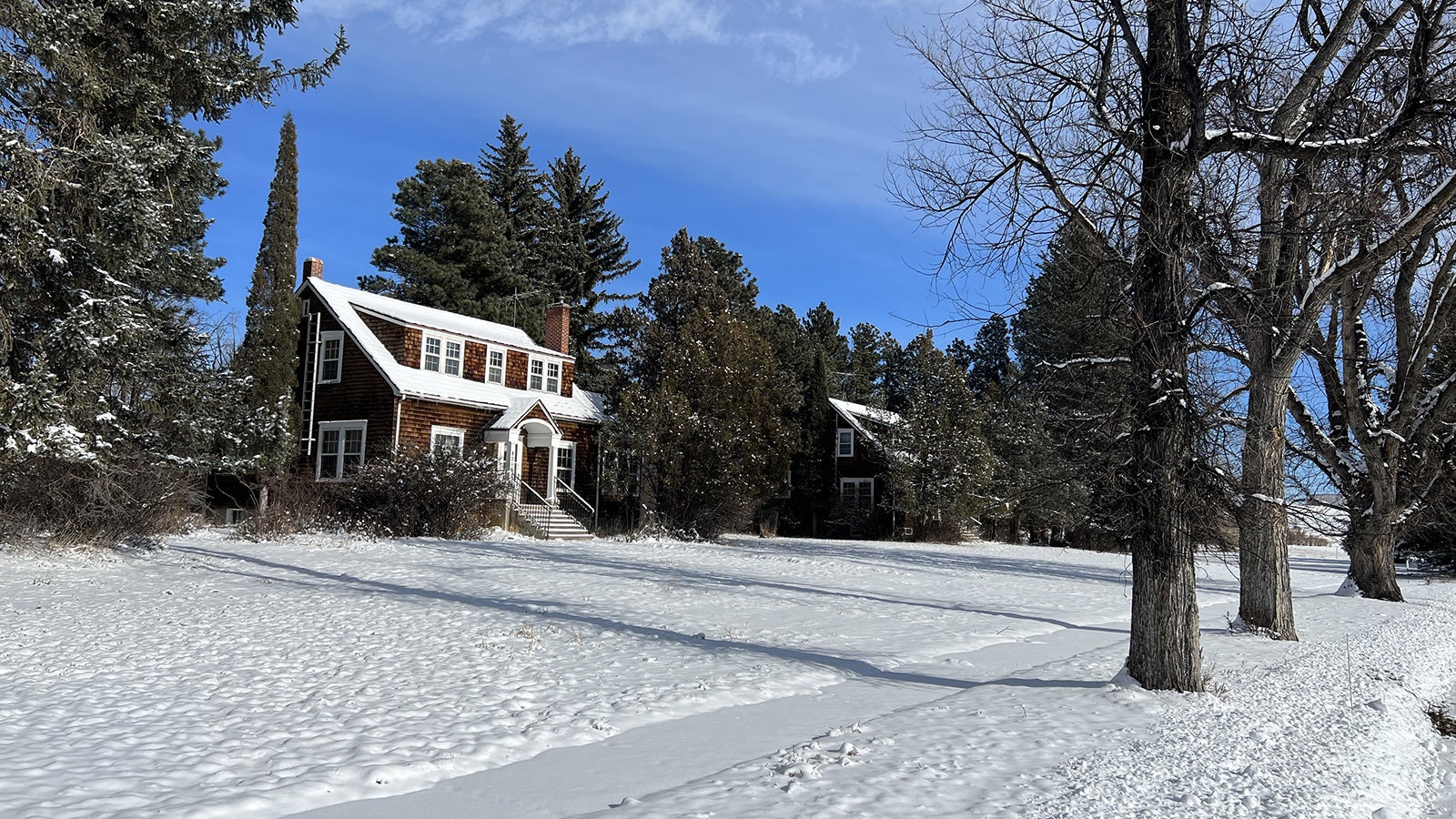By Renée Jean, Business and Tourism Reporter
renee@cowboystatedaily.com
A row of gorgeous homes in a picturesque Wyoming landscape sit perpetually empty in Cheyenne even as the city is feeling the pinch of a severe housing crisis.
The puzzlingly vacant properties lie on land shared by the High Plains Arboretum and leased from Cheyenne to the USDA’s Agricultural Research Service for 199 years and were, once upon a time, used as homes to house the agency’s employees.
“The buildings have been used less during the last years as research projects were relocated or refocused,” a USDA-ARS spokesperson told Cowboy State Daily. “Although no formal deals are available, ARS is in discussions to repurpose these structures.”
The spokesperson would not elaborate on what type of purpose they could be used for and did not respond to further inquiries, such as when the homes were sealed up.

New Life For Old Homes?
Cheyenne Mayor Patrick Collins, meanwhile, told Cowboy State Daily that he has tried unsuccessfully to find new life for the homes, which were built when the research station was established around 1928 to 1930.
“I did meet with some developers who, you know, could we work out a land lease where they could — because we still have 90-some years left on that lease — could they put the money in and rent them out?” Collins said. “But I couldn’t find any takers for that.”
Obstacles To City Owning Them
Collins said the city isn’t in a position to put six-figure sums of money into renovating and restoring the homes, then becoming a landlord for the next 90 or so years until the lease runs out.
Selling the homes also wouldn’t make sense, because someday the city will get all of that land back, and having an island of a few homes in the middle of it belonging to someone else could be awkward.
“I’d hate to have some private land in the middle of it that would prevent (future Cheyenne City Councils) from being able to do whatever they want to do with that area,” Collins said. “So that was what concerned me, and I didn’t want to sell them for that reason.”

Overall, In Good Condition
Three in a group of four homes near the arboretum’s entrance are in very good shape, Collins said, while one has significant water damage but is likely still salvageable.
“They’ve been preserved very well on the outside,” Collins said. “They have new roofs on them and, you know, they’ve been buttoned up tight and things like that – with the exception of one of them, where it looks like there’s been a collapse. There’s water and some mold in it, but three of them are in really good shape.
“They’re just old, so they would need substantial money to go into them, and I don’t know what they would actually rent for way out there.”
City Needs Housing Options
Collins acknowledged that Cheyenne needs more housing — 5,000 more homes, according to a recent study on the city’s housing shortage.
“I think the housing crisis is really bad,” he said. “But we just don’t have a fund, you know, to put $200,000, $300,000 into those homes to, you know, modernize the utilities and carpet and do all the things that need to be done in those homes to get them where they’d be in a rentable state.”
There’s also a clause USDA-ARS put into a recent agreement releasing the Arboretum back to Cheyenne that precludes pursuing National Historic Registry for the homes.
Listings on the NHR come with stipulations dictating how homes can be restored, ranging from use of materials to other considerations for preserving their historic nature. It would also preclude simply tearing the homes down, which Colins acknowledged could be their future if they continue to remain vacant.
Holding Out Hope
Collins said he continues to hold out hope a developer will come forward to save the homes.
“I’d love to see people living out there who would have prevented some of the vandalism that happens maybe in some of the areas, the greenhouses and things that happen out there at night,” he said. “If somebody would be interested in doing a long-term lease and could get them cleaned up and make them rentals, you know, take on the maintenance of them and the responsibility, obviously, I think the governing body would be interested in having that conversation.”





